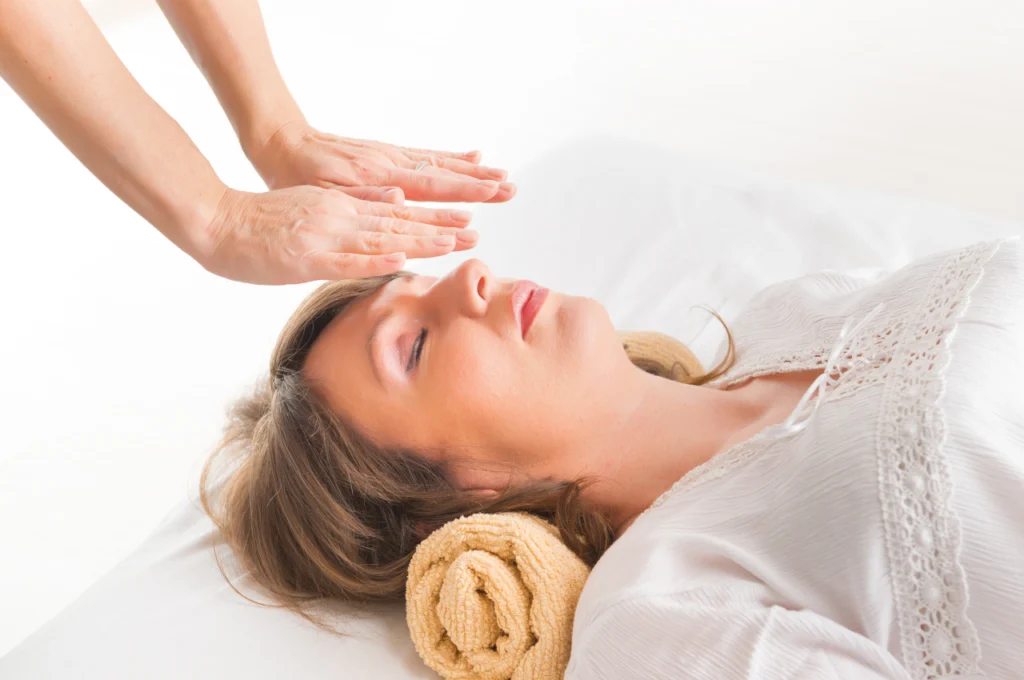What Is Trazodone?
Trazodone is the generic form of the brand-name Desyrel. These drugs are classified under serotonin antagonist and reuptake inhibitors (SARIs). It’s an antidepressant medication approved by the U.S. Food and Drug Administration (FDA) to treat major depressive disorders.
Trazodone does this by inhibiting neurotransmitters in the brain responsible for arousal from activating and produces a sedating effect in low doses. In doing so, trazodone helps rebalance levels of serotonin.
Off-label uses that aren’t approved by the FDA include the following:
- Insomnia
- Anxiety
- Alzheimer’s disease
- Substance abuse
- Bulimia
- Fibromyalgia
- Obstructive sleep apnea
Trazodone is a secondary line of treatment for people having nightmares associated with post-traumatic stress disorder (PTSD). It can also improve mood, appetite and energy levels.
Therapy.com is user supported. We receive a commission fee from purchases made through BetterHelp links.
Learn More
How Trazodone Works in the Body
Trazodone is available in varying tablet doses and is taken orally. As it enters the brain, it increases serotonin levels so you feel better and more relaxed. Trazodone is a serotonin modulator and is beneficial for those with lower levels of serotonin and are at risk from depression.
Trazodone’s mechanism of action includes postsynaptic serotonin 5-HT2A and 5-HT2C receptors. Rather than depleting serotonin, the brain stores the chemical to build up a reserve. This discourages depression from reoccurring.
In addition, trazodone can also block postsynaptic alpha-adrenergic receptors and histamine receptors to prevent arousal.
Selective Serotonin Reuptake Inhibitors (SSRIs)
Trazodone differs from other antidepressant medications, such as SSRIs. SSRIs are like SARIs in that both increase serotonin levels in the brain. However, SSRIs block serotonin reuptake from entering nerve cells. SARIs block serotonin from entering nerve cells and block serotonin receptors. Their dual action allows them to influence serotonin and other neurotransmitters.
Selective Norepinephrine Reuptake Inhibitors (SNRIs)
SNRIs are another type of antidepressant. These block serotonin and norepinephrine, which are neurotransmitters associated with mood, pain, and fatigue. SARIs interact with multiple neurotransmitters, including serotonin and norepinephrine, rather than blocking them.
NMDA Receptor Agonists
N-methyl-D-aspartate (NMDA) receptor agonists like ketamine differ from SSRIs by targeting different chemicals in the body. NMDAs bind glutamate and glycine to block the excitatory effects of their respective NMDA receptors. Doing so can reduce depression and lead to feelings of calm, dissociation, and improved mood.
Conditions Trazodone Helps Treat
What is trazodone used for? Trazodone has primary and secondary uses for people suffering from a wide range of symptoms.

Only physicians can prescribe trazodone, and it is taken under their supervision. Doctors typically start patients at the lowest dose and then increase it until symptoms become manageable. Common conditions for which trazodone is prescribed include the following:
Major Depressive Disorder (MDD)
MDD is the primary condition for which trazodone is prescribed. Studies published in the Annals of General Psychiatry have indicated that, trazodone acts quickly and leads to the following benefits when used to treat MDD:
- Safety
- Improved mood
- Improved sleep
- Reduced anxiety
- Reduced agitation and irritability
MDD symptoms can become severe and impact how someone functions at work, home, school, and in public. Trazodone can minimize these negative symptoms. Even those with treatment-resistant depression and have tried many other antidepressants may see improvements with trazodone.
Therapy.com is user supported. We receive a commission fee from purchases made through BetterHelp links.
Learn More
Secondary Uses for Trazodone
According to the FDA, doctors may prescribe trazodone for conditions other than MDD. If the doctor feels trazodone is medically appropriate, they can prescribe it as an “off-label” medicine, or an unapproved use of an approved drug.
Examples of off-label uses for trazodone include:
- Insomnia
- Schizophrenia
- Anxiety
- Uncontrollable movements
- Manage alcohol use disorders
- Chronic pain
- Degenerative diseases
- Neuropathy
Unapproved use can also alter the format of the drug. For example, trazodone is approved in tablet form, but prescribing doctors may order the brand name Desyrel in capsule form. Unapproved usage can also refer to a different dosage than the drug’s approved strength.
FAQs
The FDA has approved trazodone to treat depression. However, it has numerous off-label treatment uses, including sleep disorders, anxiety, Alzheimer’s disease, substance use disorders and pain.
Depending on what your doctor thinks is appropriate, the dose may vary. Typical doses of trazodone for sleep range between 25-100 mg at bedtime.
Trazodone side effects may not occur for everyone. Those that do occur vary for each person and range from mild to severe. Any symptoms that begin after taking trazodone should be discussed with your doctor.
When doctors prescribe trazodone for sleep disturbances, effects can occur within an hour of administration. Prescriptions for MDD or other psychiatric symptoms can take one to two weeks for the full effects to reach peak performance in the body.
Trazodone can be used long-term and is considered safe if taken under the supervision of a physician.
Benefits and Risks of Trazodone
Trazodone is typically prescribed as an oral tablet in 50, 100, 150, and 300 dosages. These dosages are individualized, but most doctors start at the lowest dose and increase it until symptoms subside. It’s recommended to take trazodone with meals.
Treatment Benefits
The benefits of taking trazodone differ for each individual. It depends on the intensity of the condition being treated.
However, some of the most common benefits include:
- Improved sleep
- Reduced anxiety
- Fewer symptoms of depression
- Eased symptoms of bulimia
- Aid in substance abuse treatment
- Eased chronic pain
- Reduced PTSD
- Reduced chronic pain
Benefits are conditional on individualized treatment needs, doses, and lifestyle changes that complement the effects of Desyrel. Trazodone works best when part of an integrative treatment plan that includes counseling and other forms of support.
Side Effects of Trazodone / Desyrel
Trazodone side effects may appear right away or after taking trazodone for weeks or months. Most side effects go away on their own, but should be reported to your physician as soon as possible.
These include:
- Nausea or vomiting
- Diarrhea or constipation
- Weight loss or gain
- Weakness or tiredness
- Nervousness or anxiety
- Dizziness or lightheadedness
- Nightmares
- Muscle pain
- Dry mouth
- Rash
- Sexual dysfunction
- Shaking uncontrollably
- Stuffy nose
- Tired, red, or itchy eyes
Although rare, some people may experience more severe side effects from trazodone. If you notice any of the following symptoms, seek medical care immediately:
- Irregular heartbeat or arrhythmia
- Chest pain
- Losing consciousness
- Fever
- Sweating
- Confusion
- Muscle spasms
- Hallucinations
- Seizures
- Shortness of breath
- Unusual bleeding or bruising
- Nose bleeds
- Red or purple dots on the skin
- Painful erections or erections that don’t go away, priapism
- Coordination problems
- Weakness
If you experience worrisome symptoms that aren’t on the list above, contact your doctor for advice on what steps to take. But do not stop taking trazodone cold turkey. Doing so can lead to further uncomfortable symptoms.
Importance of Medication Monitoring
Medication monitoring is the therapeutic process of testing your medications to ensure they’re safely effective and not causing adverse reactions. Not all medicines require monitoring, but those taking trazodone can benefit. You can verify that you’re taking the correct dose at the right time of day and if it’s interacting with other medications you take.
Therapy.com is user supported. We receive a commission fee from purchases made through BetterHelp links.
Learn More
Medication monitoring typically includes blood tests to show the doctor if your dose is within the therapeutic range for effectiveness. Doctors also rely on symptom reports. Documenting any positive or negative differences is crucial after you begin taking trazodone.
Trazodone as Part of a Holistic Treatment Plan
Standalone trazodone can offer relief from many adverse symptoms. As part of a holistic treatment plan, trazodone can lead to positive life changes to improve your overall physical and psychological well-being.

A holistic treatment plan focuses on improving all areas of your life through specific approaches.
Behavioral Therapies
Your thoughts influence your feelings and how you respond to specific situations. Unhealthy thoughts often lead to harmful behaviors. Working with behavioral therapists allows you to recognize negative thought patterns and replace them with realistic and positive ones.
Trazodone helps you have a clear, stable mind to change thought patterns using common counseling techniques such as the following:
- Cognitive-behavioral therapy (CBT)
- Dialectical behavioral therapy (DBT)
- Exposure therapy (ET)
- Motivational enhancement therapy (MET)
- Acceptance and commitment therapy (ACT)
Combining medication with behavioral therapies increases the benefits of trazodone. Another way to enhance your life is to change your life to support what you learn in therapy.
Therapy.com is user supported. We receive a commission fee from purchases made through BetterHelp links.
Learn More
Lifestyle Changes
Behavioral therapists and other holistic professionals can guide you to make simple changes to improve your quality of life.
Lifestyle improvements can include:
- Sleep hygiene
- Exercise
- Stress management
- Relaxation techniques
- Diet and nutrition
- Mindfulness and self-care
Think of your lifestyle as a medicine that enhances trazodone’s effectiveness. You’re replacing unhealthy habits to achieve ultimate health.
Regular Check-Ins With Healthcare Providers
Even when you feel happier and healthier after starting trazodone and making healthy lifestyle choices, continue checking in with healthcare providers. They keep track of your progress. If something changes with your health, it’ll be much easier to figure out why.
Life is constantly changing and obstacles appear unexpectedly. Your healthcare providers can help you work through these challenges with minimal impact on your health. The more support you have means the easier it is to keep moving forward and becoming physically and psychologically well.
Getting Started
If you’re ready to see if trazodone is a good candidate to treat your symptoms or want to learn more about Desyrel, you have several options. Seek information from your family doctor if they can prescribe the medicine. You can also reach out to local psychiatrists or physicians trained in mental health. You can find many providers on directories like Therapy.com.
Psychiatrists use multiple assessments to see if trazodone is a good fit for your needs. They can tell you exactly how trazodone works and why. They’re often affiliated with local mental health facilities to start behavioral therapies and holistic treatments.
This means you can receive all your treatments in one location. Some even offer services online to make treatment even more convenient.
Reach out today for help.
Therapy.com is user supported. We receive a commission fee from purchases made through BetterHelp links.
Learn More
